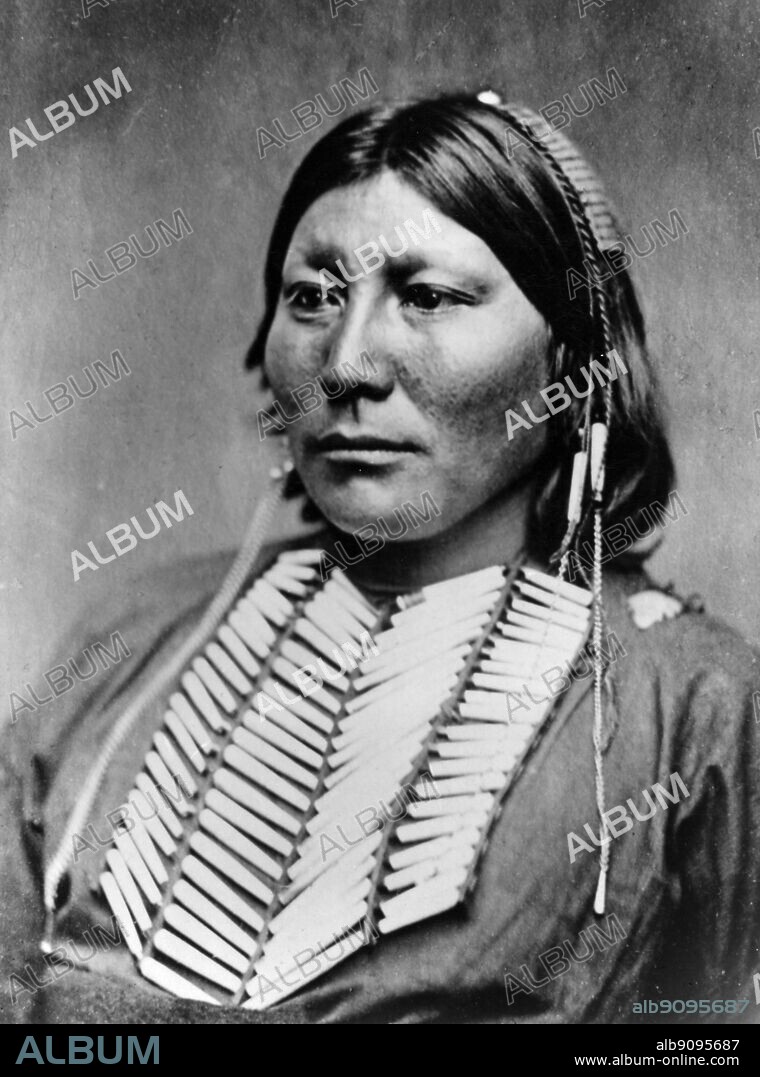alb9095687
White Horse . Kiowa chief. Noted chief and raider 1870. WHITE HORSE (?-1892). White Horse (Tsen-tainte), a Kiowa chief during the second half of the nineteenth century, was noted among the tribe for his daring. Even in his teens he showed remarkable adeptness as an apprentice warrior. Due to his unusual strength, he became an outstanding horseman, able to snatch up a child while at a gallop. In the summer of 1867 White Horse joined a large party of Comanches and Kiowas on a revenge raid against the Navajos, who were then living in exile on the reservation near Fort Sumner, New Mexico. On the Canadian River near the Texas-New Mexico line, White Horse and some of his followers killed and scalped a Navajo warrior. Shortly afterward, the war party attacked a Navajo village on the Pecos River. During the initial charge, White Horse seized a young Navajo boy by the hair and set the boy on his mount behind him. While Navajo warriors pursued the retreating invaders, killing three of them, White Horse escaped with his captive back to the Kiowa camp and subsequently adopted the boy as his son.

|
Add to another lightbox |
|
Add to another lightbox |



Buy this image.
Select the use:

Caption:
White Horse . Kiowa chief. Noted chief and raider 1870. WHITE HORSE (?-1892). White Horse (Tsen-tainte), a Kiowa chief during the second half of the nineteenth century, was noted among the tribe for his daring. Even in his teens he showed remarkable adeptness as an apprentice warrior. Due to his unusual strength, he became an outstanding horseman, able to snatch up a child while at a gallop. In the summer of 1867 White Horse joined a large party of Comanches and Kiowas on a revenge raid against the Navajos, who were then living in exile on the reservation near Fort Sumner, New Mexico. On the Canadian River near the Texas-New Mexico line, White Horse and some of his followers killed and scalped a Navajo warrior. Shortly afterward, the war party attacked a Navajo village on the Pecos River. During the initial charge, White Horse seized a young Navajo boy by the hair and set the boy on his mount behind him. While Navajo warriors pursued the retreating invaders, killing three of them, White Horse escaped with his captive back to the Kiowa camp and subsequently adopted the boy as his son.
Credit:
Album / TopFoto
Releases:
Model: No - Property: No
Rights questions?
Rights questions?
Image size:
4330 x 5836 px | 72.3 MB
Print size:
36.7 x 49.4 cm | 14.4 x 19.5 in (300 dpi)
Keywords:
 Pinterest
Pinterest Twitter
Twitter Facebook
Facebook Copy link
Copy link Email
Email
